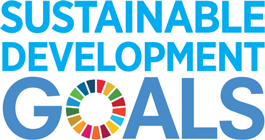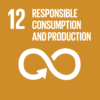Scaling up the shift towards circular production in fashion and beyond
Exploring ways to scale the adoption of new business models and fast-track innovation and collaboration at the circular production level - in the fashion industry and beyond.
Summary of Discussion
Question 6: How can an actor like C&A Foundation, and its Strategic Partner Fashion for Good, drive more positive change?
- Drive prototyping/piloting program
- Accelerate and scale existing initiatives
- Longer term finance commitment
- Raise consumer awareness and what's in it for them
- Initiate collaborations - bringing together brands, SMEs, manufacturers & others
- Focus on a challenge for collaboration
- Support for transparency/ information sharing
- Government lobbying/advocating system change
- Leverge corporate knowledge and connections
Question 5:
Which actors in the fashion industry do we need to involve in this transition to circular?
- Everyone! Industry transformation needed
- Coalitions - brands are essential in these
- Larger brands and retailers - they can make it happen
- Consumers - they need to be engaged and the fashion industry has huge communication power
- governments - for the initial policy making and for infrastructure
- NGOs and foundations - supporting disruptive ideas
- Within companies, beyond sustainability teams - to make circular core to business with economic viability
- Investors
- Manufacturers
- SMEs - to show how it can be done!
Question 4: What can we learn from other industries?
- Partnerships and collaboration for problem solving (SDG17!) - pre-competitive space
- Deposits for clothes... (cans/bottles)
- Business case - built environment
- Leading not waiting for consumers to respond (automotive, lighting)
- Learning from individual pilots and new models e.g. printing industry
- Maximising raw materials (metal industry) and going back to traditional methods
- Many learnings from glass industry on producer responsibility (EPR schemes) / recycling
- Putting consumer needs first (Airbnb/uber)
Question 3: What changes are needed to overcome these barriers?
- Bolder leadership
- Disruption - new, innovative circular models from new entrants
- Education and training of suppliers
- Capacity
- Proof of concept
- Collaboration
- Regulatory solutions and supporting policies
- Price incentives
- Massive investment!
Question 2: What are the barriers to adopting circular product design and / or manufacturing processes in the fashion industry?
- Consumer behaviour and low demand from them – and willingness to pay more
- Lack of commitment / motivation / willingness to change from business
- Lack of openness and transparency across the supply chain
- Problems with traceability of materials
- Lack of funding for SMEs
- Insufficient innovation
- Lack of collaboration - and whole system re-structure needed
- Lack of leadership
Q1 Fashion industry - leader or laggard on circular models?
Industry is a laggard – gap between the ‘walking and the talking’
- Early stages in circularity – the industry is slow to respond
- Design is moving faster than production
- Slow on technology and it's still a throw away industy
- But awareness is increasing and there are some initiatives
- There’s a sense of optimism and momentum
- Lots of potential for creativity and inspiration!
Meet our Special Guests
H&M Foundation
PwC Europe
Fashion Technology Accelera…
GlobeScan
C&A
C&A Foundation
The Hong Kong Research Inst…
Fashion for Good
Worn Again
Li & Fung Limited
Cradle to Cradle Products I…
Ecopreneur EU
Session Moderator
Paris, France




Posts
Back to Top